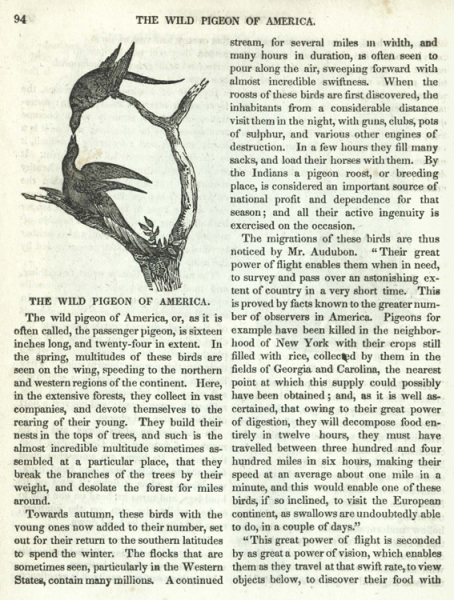The Wild Pigeon of America.
Woodcut, after a drawing by John James Audubon.
In: Parley’s Magazine, I (1833), p. 94.
This early nineteenth-century article from Parley’s Magazine typifies the wealth of popular, informational accounts of the remarkable passenger pigeon that followed the publication of Alexander Wilson’s text in 1812. Citing Wilson, such articles universally stressed the phenomenal numbers of the birds, whose flocks could span 240 miles and comprise over two billion individuals. The writers marveled at the birds’ swiftness—60 miles per hour—as well as the flocks’ voracious appetites and the deafening tumult where the multitudes roosted, nested, and were beset by hunters.
In contrast, the accompanying image shows an early imitation of Audubon’s mild pair of peacefully billing birds, first published in 1829. Tiny, crude, and reversed, the print testifies to the potency of Audubon’s image, which had quickly supplanted Wilson’s as the definitive vision of the passenger pigeon within the popular imagination.
